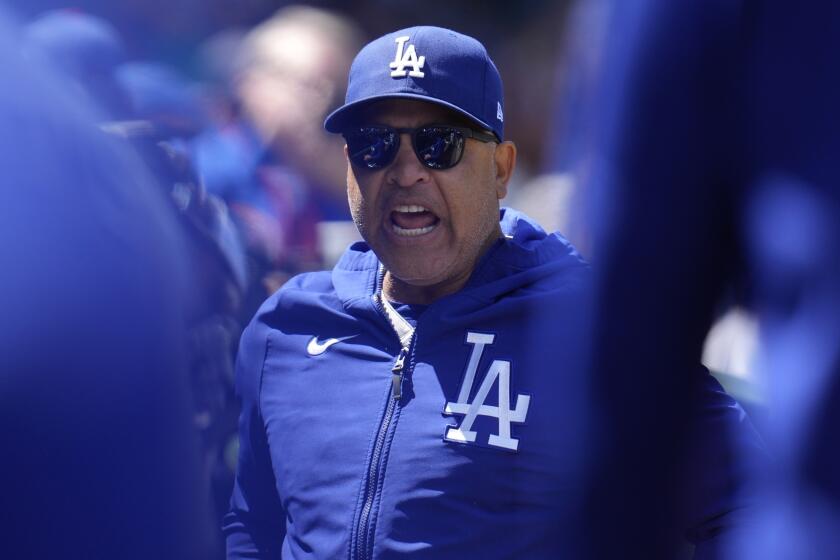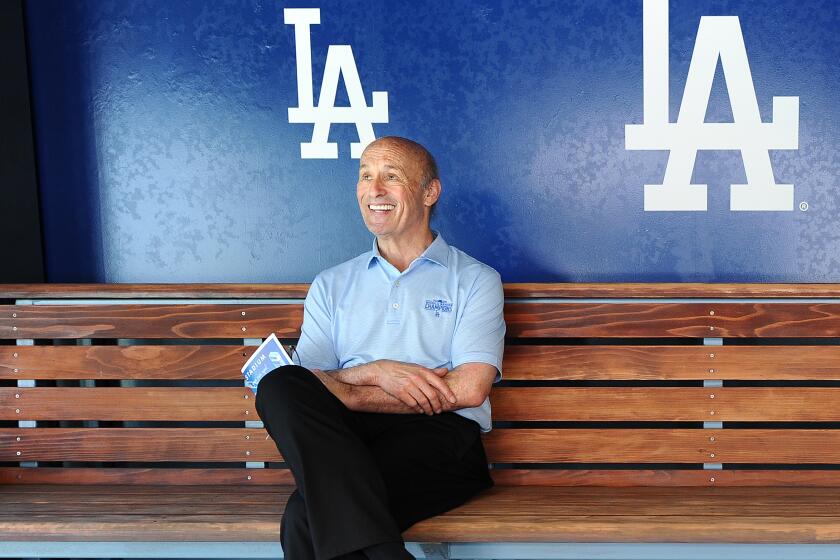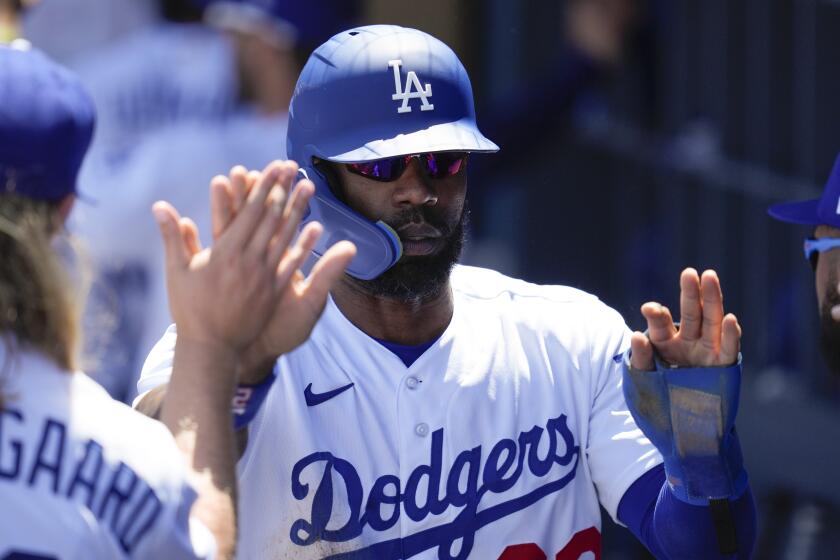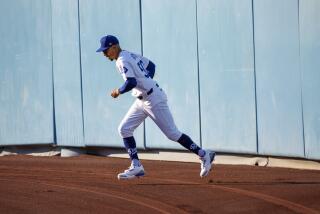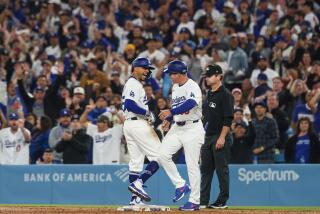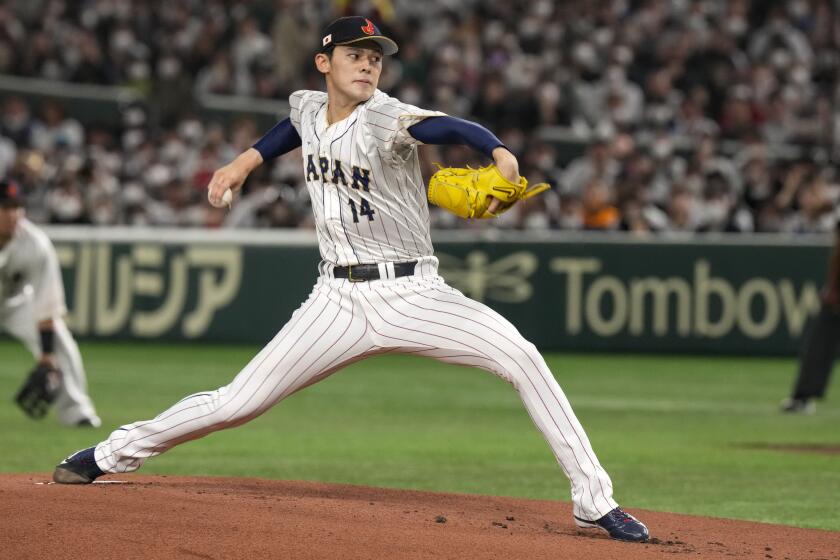Mookie Betts at shortstop? How the Dodgers’ experiment could make long-term sense
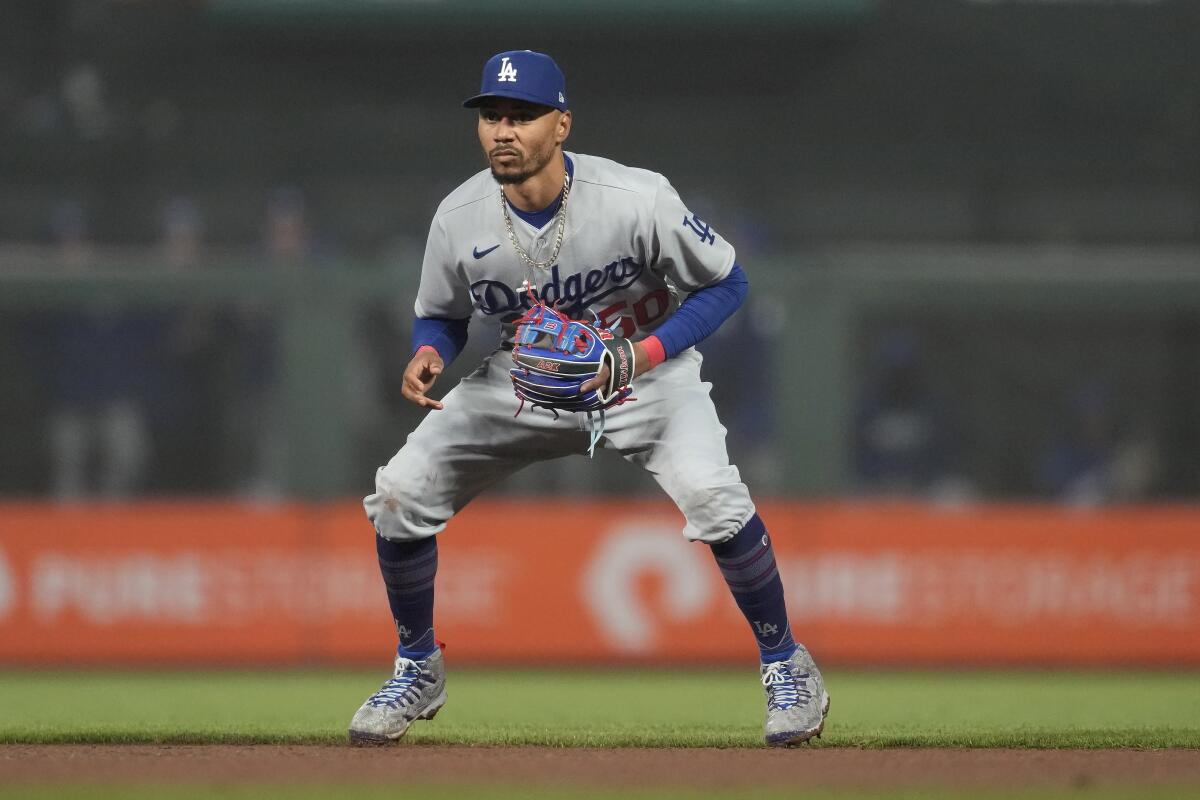
CHICAGO — It started as a temporary measure, a short-term solution to the Dodgers’ growing infield injury list.
For all of Mookie Betts’ natural skill, after all, the Dodgers had never really considered a world in which he might regularly play shortstop.
His superb defense in right field seemed too valuable. And as even he had noted on multiple occasions, the team isn’t paying him $365 million to be an infielder.
However, after making his major league debut at the position Thursday night and his first career start there on Sunday — he turned impressive double plays in both — continuing to experiment with Betts at shortstop might suddenly be making a lot of sense.
The Dodgers barely avoid giving up a perfect game to Cubs journeyman Drew Smyly in a 13-0 loss that leaves them with their worst 20-game start since 2018.
“The ability and willingness for Mookie to play second or short,” manager Dave Roberts said, “I can see it happening more often.”
Betts was already slated to see occasional time at second base this season, stemming from the torn ACL that ended Gavin Lux’s year and ate significantly into the Dodgers’ infield depth.
Shortstop, though, was initially seen as another beast.
Yes, Betts grew up playing the position, drafted as a shortstop by the Boston Red Sox in 2011. And even after his early-career switch to the outfield, he continues to do pregame drills around the infield almost every day.
“He has the skill set,” third base coach and infield instructor Dino Ebel said. “He has the tools.”
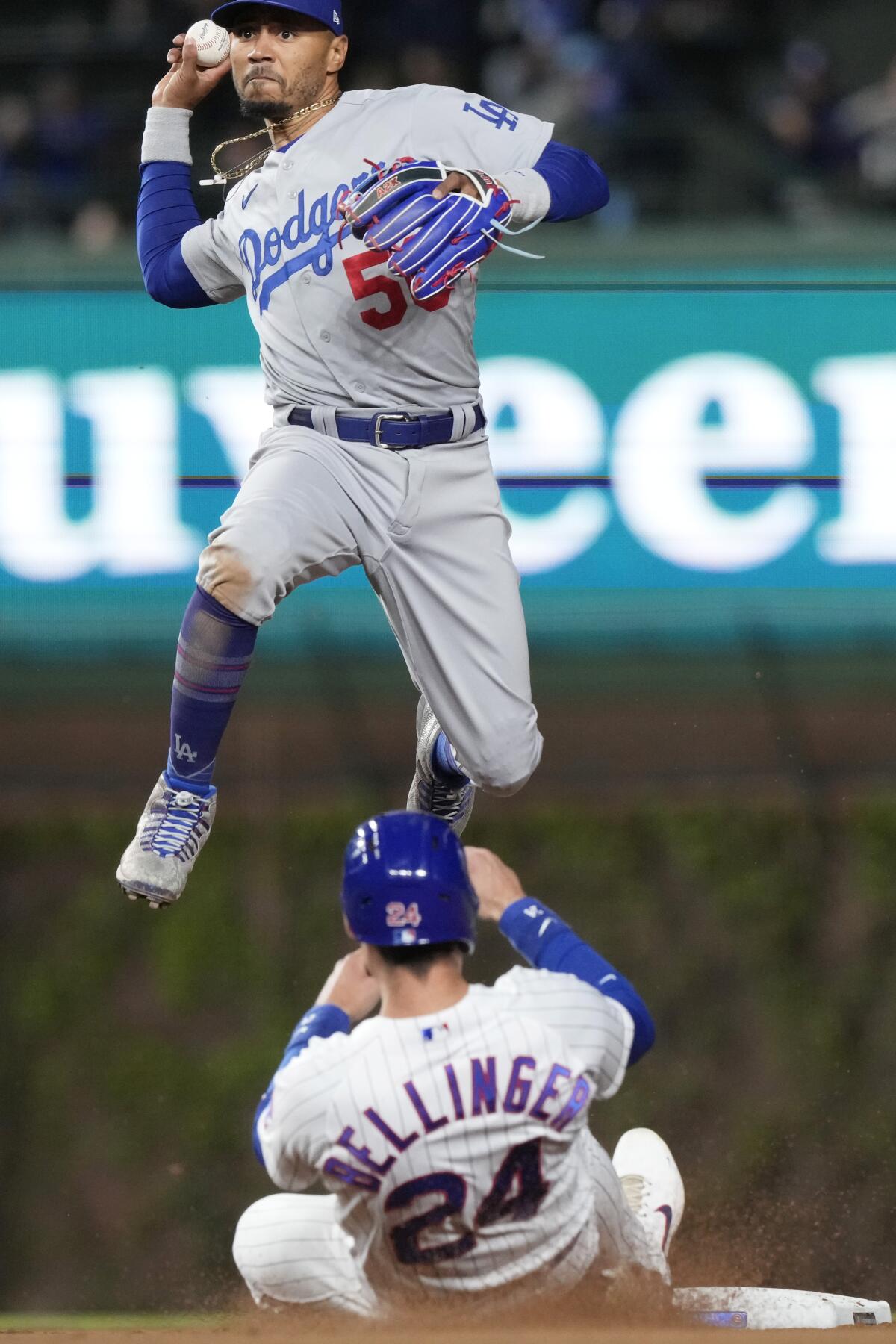
Still, Betts had never played shortstop in a big league game. Prior to Thursday, his last professional appearance there was in the developmental Arizona Fall League in 2013.
His reputation as a right fielder — which admittedly isn’t Betts’ favorite position, but the one where he’s flourished as a six-time Gold Glover — kept him pigeon-holed to that spot.
And while the Dodgers recognized his potential in the middle infield, they never really pursued it as a genuine possibility.
“I think that’s way down the road,” Roberts said this spring when asked whether Betts might take on an infield position. “We’ve got so much depth on the infield side, I don’t see it happening this year.
But then, Lux tore his ACL in March. His replacement, Miguel Rojas, went on the injured list with a strained hamstring last week.
At the same time, Chris Taylor tweaked an oblique that has kept him limited to bench duty for several days.
Suddenly searching for other answers, the Dodgers called up Luke Williams and, when Betts went on the paternity list for a couple games this week, gave Yonny Hernández a cup of coffee.
Yet, when Betts returned Thursday night — following a mad dash from the airport to get to Wrigley Field on time to be activated — Roberts and company were finally ready to pull the trigger, fulfilling what Betts described as a career-long dream.
“I just told Doc, ‘I just want to win. I’ll play wherever. I’ll do whatever,’ ” Betts said. “I grew up doing this. So it’s nothing new.”
Dodgers president Stan Kasten doesn’t see the need for the Dodgers to follow in the footsteps of the Mets and Padres when it comes to roster building.
From the dugout, Ebel immediately noticed Betts’ comfort-level on the double play, when he snared a one-hopper, ran to second himself and leaped over a sliding Cody Bellinger to make a throw to first base.
“The instincts took over,” Ebel said. “He reacted like he played there 12 years.”
First baseman Freddie Freeman, who was also on the receiving end of the double play Betts turned for the final outs of Sunday’s game, has also been blown away — though hardly surprised.
“I think he could be a Gold Glover at any position,” Freeman said. “I don’t know many other people that can be considered top five players in all of baseball, and cover multiple positions and make it look easy.”
Where the process goes next is unclear.
Betts could start at shortstop again on Tuesday, Roberts said, as the team waits for Rojas to return and looks for ways to give more at-bats to its left-handed hitting outfielders.
Maybe that will be the end of the line for Betts’ shortstop career.
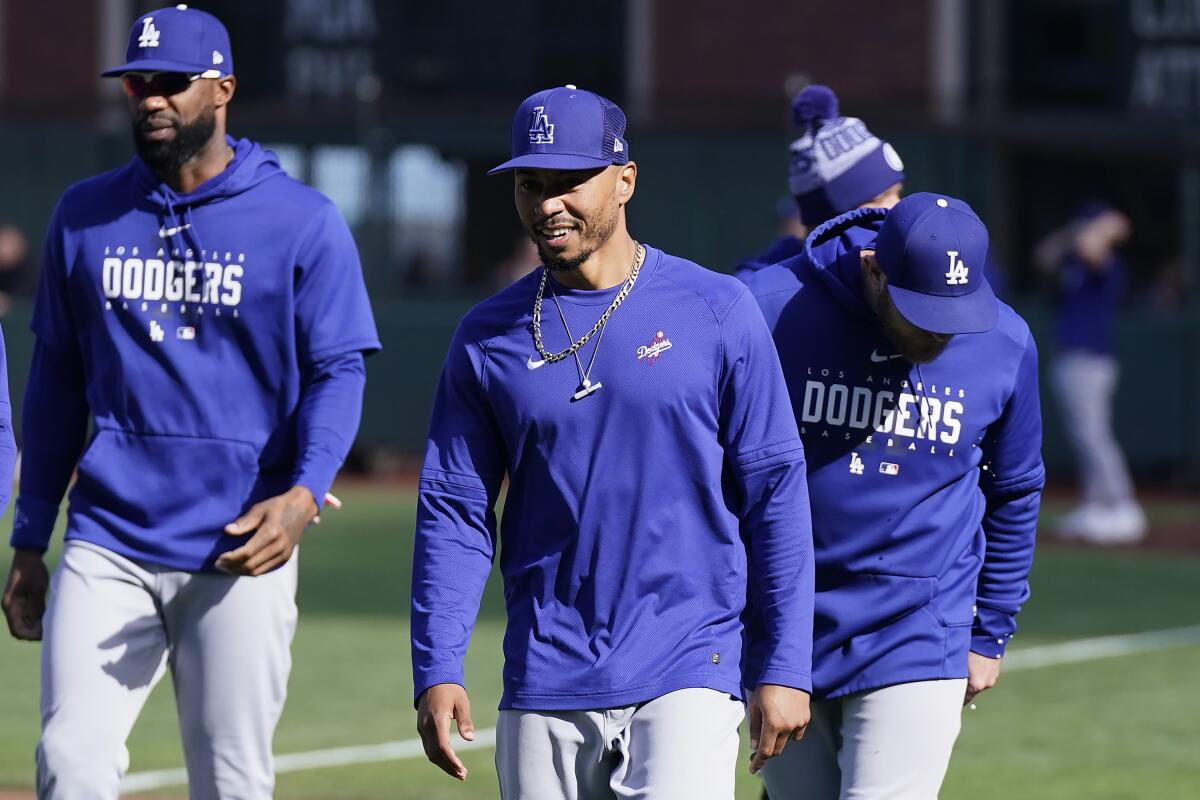
But maybe, for an organization that treasures “optionality” with its roster, there’s a world in which Betts remains a factor at the position.
The case for the latter looks something like this: While Rojas and Taylor have far more game experience at shortstop than Betts, both have struggled mightily at the plate to begin the season (Rojas is four for 32; Taylor is five for 45 with four homers but also 21 strikeouts).
If they don’t turn things around, the Dodgers could be in search of a replacement at the trade deadline.
Though attractive targets should be available then, maybe none bigger than Tim Anderson of the Chicago White Sox, trading for a legitimate starting shortstop is usually no simple proposition.
Offensive-minded corner outfielders, on the other hand, are usually in greater supply come the deadline.
Jason Heyward wasn’t sure if he’d ever play again at Wrigley Field. After an offseason of unknowns, Heyward is grateful to be back in Chicago with the Dodgers.
And if the Dodgers feel the need for another impact bat, pursuing a trade for an outfielder, and in turn giving Betts more playing time at shortstop, could potentially look like a viable option.
That possibility is well down the line. The Dodgers preference would be to get enough production from Rojas or Taylor to leave Betts primarily in right field.
But giving him shortstop reps right now, just in case of the variables that could come into play, certainly wouldn’t hurt.
For a former MVP who has always dreamed about returning to the middle infield, the Dodgers already have his buy-in.
“I don’t really care where I play or what I do,” Betts said. “I just want to win.”
More to Read
Are you a true-blue fan?
Get our Dodgers Dugout newsletter for insights, news and much more.
You may occasionally receive promotional content from the Los Angeles Times.

